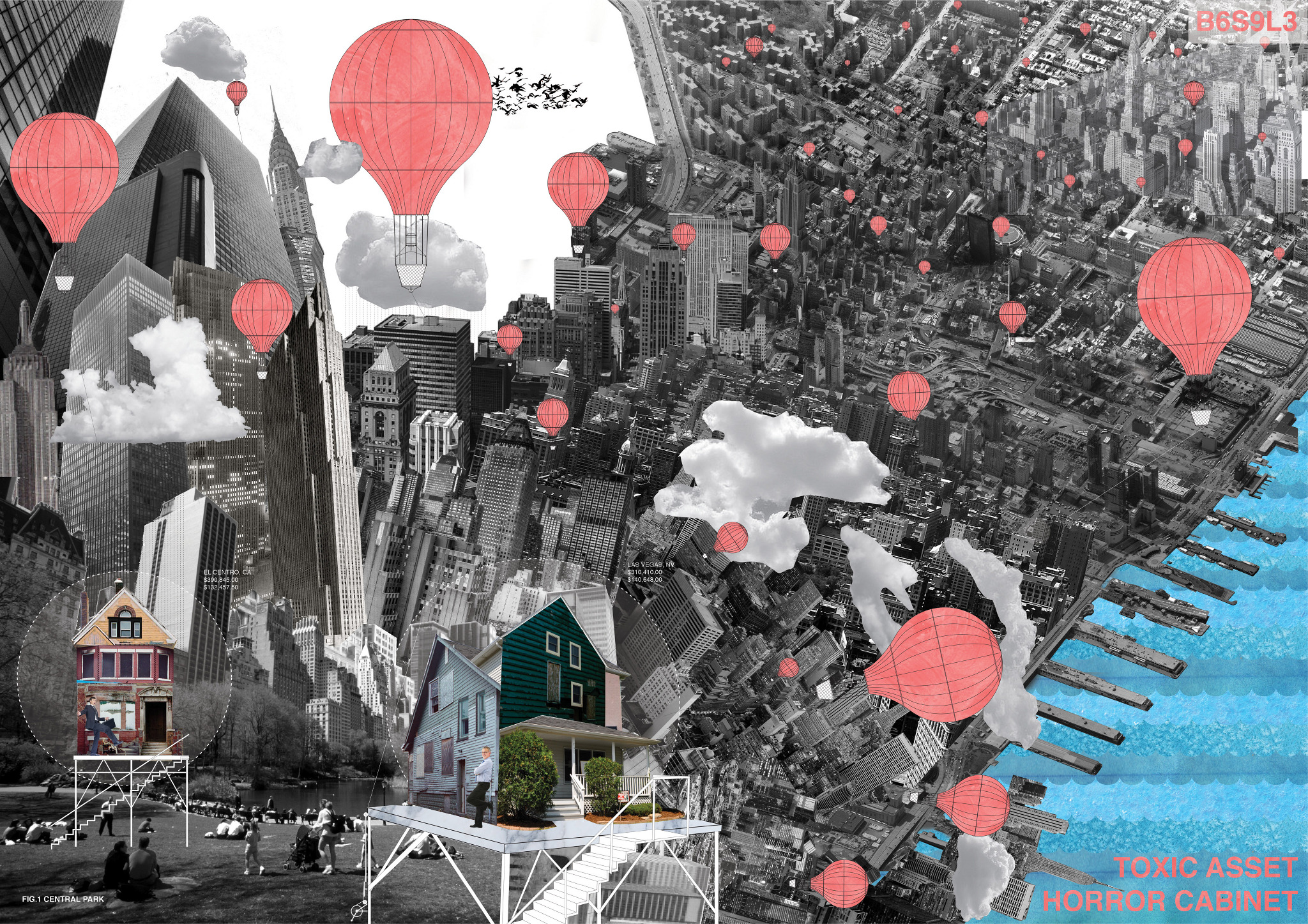New York CityVision Competition 2012
In collaboration with: Henry Stephens & Nick Roberts


The Toxic Asset Horror Cabinet speculates on a future for New York, driven by the city’s historical tendency to re-script it’s idea of entertainment - a condition where authenticity becomes a tool to be manipulated for commercial gain.
During the late 20th Century, previously ‘anti-social’ forms of entertainment such as the strip-clubs and brothels that occupied 42nd St and Times Square were replaced by sanitised, carefully designed experiences that are now familiar parts of the New York’s identity. New York has long capitalised on a self-awareness of its own image, a state where authenticity becomes reproducible as entertainment, an ultimately mediated urban experience, or ‘vicarious encounter’ with the real New York (Chaplin, Holding (2002). This observation of New York’s past behaviour has resulted in a proposal for a new form of disaster-tourism: one based on the recent and still-lived history of 2008’s Global Financial Crisis. This proposal differs from conventional disaster tourism in that the disaster is both unnatural and largely intangible - our future New York specifically engages the absence of any physical trace left in the very location the disaster purportedly stemmed from.
This proposal addresses the physical manifestation of toxic assets - if the physical effects of the global financial crisis were dispersed far from Wall St, this project reintroduces the physical form that these assets were derived from: foreclosed homes from across America (FIG 5). As Phillip Johnson’s AT&T tower would come to symbolise corporate America infiltrating the domestic (Jacobs, 2012) - here the domestic literally re-enters the corporate – this time as entertainment. Our proposal takes the form of foreclosed homes planted strategically along popular tourist routes (FIG 2). The home becomes the monument, and then the museum - a mobile tourism infrastructure to commemorate an immaterial crisis. Operated by previously out-of-work bankers, these homes are flown in and marked, not by the weight of the grid, but instead by the lightness of balloons - reclaiming the vertical space of Manhattan for the many unknown victims of the disaster, and in turn establishing a presence equal to that of its iconic skyscrapers (FIG 1, 3,4, 6).
As the effects of the global financial crisis continues to be a lived and painful reality for so many, this project re-introduces the notion that despite the immaterial mediums through which America’s financial institutions operate, their physical manifestations are equally real. The Toxic Asset Horror Cabinet removes this physical distance between cause and effect, and the ideal image of New York is forced to contend with its true self, masked in the form of entertainment - just as it has always done.
References
Chaplin, S. and Holding, E. (2002). Addressing the Post-Urban - Los Angeles, Las Vegas and New York in Leach, N (ed.), The Hieroglyphics of Space - reading and experiencing the modern metropolis. New York: Routledge.
Jacob, S. (2012). On Sketches for Regency Living,http://strangeharvest.com/on-sketches-for-regency-living. Retrieved 10/06/12